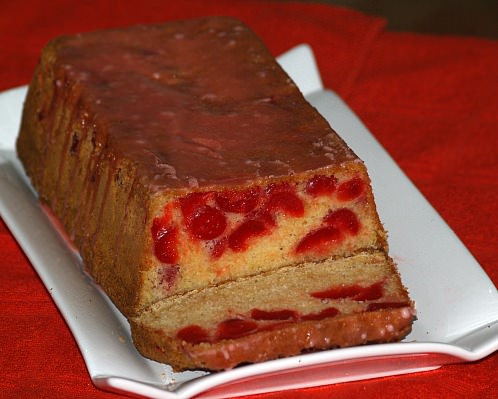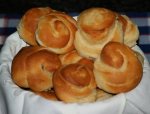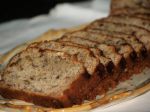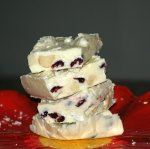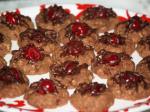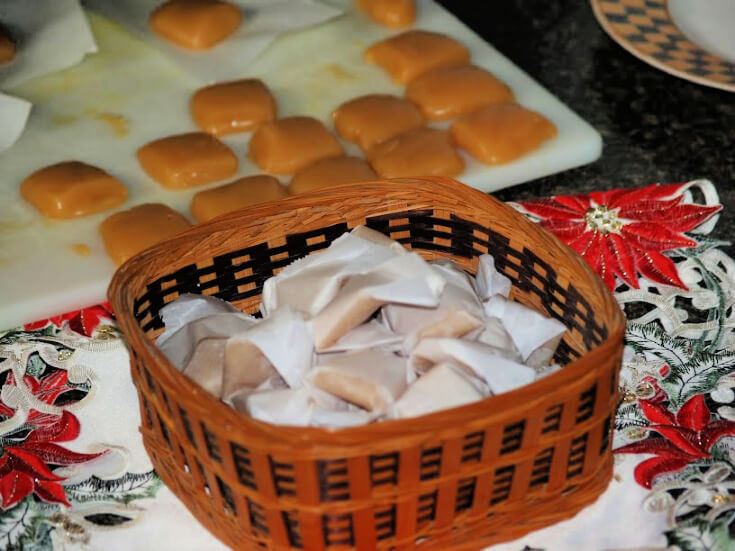- Painless Cooking
- Bread
- Coffee Table Bread
History of Coffee Tables and Serving Bread Recipes
Have you ever given any thought to the history of coffee tables? When I was very young, up to the age of eight, I remember a table in our living room. Throughout my life, I have had visions of this table. It was so significant in my life mainly because it stood in the middle of the room and had no chairs.
We didn’t have a lot of furniture, but adequate and certainly nothing fancy. The rooms in our old house were quite large and as I remember quite plain. The kitchen held a very large table but not enough chairs for our large family to sit down. Dad would add boards between two chairs to make more room for us younger ones.
The bedrooms were large but only three in the house. One was for the boys, one for us girls and one for Mom and Dad. I remember having to sleep between two of my sisters every night in a full size bed. Can you imagine? But that was love!
Now back to the history of coffee tables and the table which keeps popping up in my memory. Recently, I was writing about coffee cakes and there was that vision of that table. This table was not like we think of as a coffee table so I never gave a thought to the history of coffee tables back then. Ours was tall and round like the ones you see today in the pubs but with no chairs. I set out to get some background of coffee tables.
It seems that in the Scandinavian countries a coffee table is an old traditional event so of course they would give more thought to the history of coffee tables. There, this table could even be used for a formal event. From the table along with coffee, three courses are served. The first course includes the less sweet items like a sweet yeast bread, plain cookies or open face sandwiches. The second course is usually cookies and cakes without icing. The third course includes frosted and filled cookies and cakes.
After researching the history of coffee tables, what we now call serving tables would be similar although shorter in height. The following recipes are some to be served from a coffee table.
MARGUERITES RECIPE
“Marguerites” were commonly served around 1900. As one might imagine when discovering the history of coffee tables, these dainties were probably seen on many coffee tables. They were made with Saratoga crackers from Saratoga Springs New York, only minutes from the famous race tract. These crackers were known, even back then, to be top quality. In our early years, no one would think of serving tea or coffee without the following recipe or similar one.
- Crackers
- 2 Egg whites
- ½ Cup sugar
- 1/8 Teaspoon salt
- ½ Teaspoon vanilla
- 1 Cup chopped black walnuts
- Shredded coconut
Preheat oven to 250F degrees.
Beat egg whites until soft peaks; gradually beat in sugar and salt beating to stiff peaks.
Fold in vanilla and nuts; spread on crackers and sprinkle with coconut.
Place on cookie baking sheets; place in oven about 20 minutes until meringue is dried.
TURN HEAT OFF and leave in oven about 1 hour to cool.
SCOTTISH SHORTBREAD RECIPE This is the type of cookie that would be offered throughout the history of coffee tables
- 1 ½ Cups sugar
- 3 Cups butter
- 1 Teaspoon vanilla
- 8 Cups flour
Preheat oven to 325F degrees.
Cream the butter and sugar and vanilla together; Add flour one cup at a time mixing after each addition.
Mixture is stiff and crumbly; knead with hands until well blended.
Press dough evenly into an ungreased 10 x 14 inch jelly roll pan.
Use a spatula to level the top; imprint in rows with a 2 inch cookie stamp or form designs with a fork.
Bake for 30 to 35 minutes; cut in 2 inch squares while still hot.
Remove from pan and cool. Makes 70 squares.
STRAWBERRY BREAD RECIPE
With each course at the coffee table, a cup of coffee is served and a cup at the end. It is tradition to serve seven different cakes or cookie recipes. Scandinavian cookies and cakes are very light and not very sweet so it is not as much food as it appears.
- 6 Cups flour
- 4 Cups sugar
- 4 Cups mashed strawberries
- 2 ½ Cups oil
- 8 Beaten eggs
- 2 Teaspoons baking soda
- 5 Teaspoons cinnamon
- 2 Teaspoons vanilla
Preheat oven to 350F degrees.
Grease and flour 4 large loaf pans.
Combine and beat the oil, sugar eggs and vanilla.
Sift together the flour, soda and cinnamon; Add to the egg and oil mixture and blend.
Blend in the strawberries and pour evenly into the prepared pans.
Bake for 1 hour or until the pick comes out clean.
CHOCOLATE NUT BREAD RECIPE
- 3 Squares (1 ounce each) unsweetened chocolate
- ½ Cup softened butter
- 3 Cups flour
- 1 Teaspoon baking powder
- ½ Teaspoon baking soda
- 1 Teaspoon salt
- 1 Cup sugar
- 2 Beaten eggs
- 1 Cup milk
- 2 Teaspoons vanilla
- ½ Cup chopped nuts
- 1 Cup powdered sugar
- Milk
Preheat oven to 350F degrees; grease and flour 3 small loaf pans.
Melt chocolate and butter in a small saucepan over low heat stirring until smooth; set off to cool.
Combine flour, baking powder, soda and salt.
Combine and beat together the sugar, eggs, 1 cup milk and vanilla by hand.
Stir in the dry ingredients and mix until blended; blend in the chocolate mixture.
Divide evenly among the prepared pans; bake 40 to 45 minutes.
Cool 10 minutes; remove from pans and cool completely.
MAKE GLAZE by combining powdered sugar and enough milk to make a glaze; drizzle over cooled breads.
APRICOT BREAKFAST BRAID RECIPE
- 1 loaf (1 pound) frozen white bread dough
- 2 Tablespoons softened butter
- 2 Tablespoons packed brown sugar
- 1 Can (17 ounces) apricot halves (Drain and reserve 2 tablespoons syrup)
- ½ Cup miniature marshmallows
- ½ Teaspoon cinnamon
- Glaze (Recipe below)
- Icing (Recipe below)
Brush frozen dough with cooking oil; place on cookie sheet.
Cover and thaw 12 hours in refrigerator or 3 hours at room temperature.
Roll dough into rectangle 9X15 inches on lightly floured surface.
Cover baking tray with foil and spray with oil; place dough on baking sheet.
Spread rolled dough with softened butter; sprinkle with brown sugar.
Arrange apricot halves in 2 rows lengthwise down the center of the dough.
Sprinkle the apricots with marshmallows and cinnamon.
Cut slits 2 inches diagonally at 1 inch intervals down BOTH sides of dough (On each side of apricots).
Fold in cut sides of dough crisscrossing over the apricots; pinch to seal.
Roll foil up to make a rim around the braid; cover lightly and let rise 2 ½ hours.
PREHEAT OVEN TO 350F degrees; bake 25 minutes.
Brush with glaze and bake 15 minutes longer; drizzle warm braid with icing.
GLAZE: Heat 2 tablespoons packed brown sugar and 2 tablespoons reserved apricot syrup to boiling.
ICING: Mix 1 cup powdered sugar and 1 tablespoon milk until smooth.
CHERRY BREAD RECIPE WITH GLAZE
- 1 Cup sugar
- 2 Beaten eggs
- 3 Cups sifted flour divivded
- 1 Cup milk
- 4 Teaspoon baking powder
- 1 Teaspoon salt
- 1 Cup chopped maraschino cherries
- 2 Tablespoons melted butter
Preheat oven to 350F degrees; grease and flour 9x5 1/2 inch loaf pan.
Combine sugar and eggs in large mixing bowl and beat well; add 2 cups of flour alternately with milk while beating.
Combine in another bowl the 1 cup flour, baking powder and salt; stir into batter.
Add cherries and melted butter and blend; pour into prepared pan; bake for 1 hour.
CHERRY GLAZE
- 2 Tablespoons melted butter
- 2 Tablespoons maraschino cherry juice
- 1/2 Cup powdered sugar
Combine all ingredients and beet until smooth; drizzle over cooled bread.
The British High Tea is probably served from a coffee table. The tea is usually served with scones, shortbread and sponge cakes with butter, marmalades and jams. These cake and cookie recipes are also less rich and sweet than what Americans are use to eating.
I found in researching the history of coffee tables that almost every country has a similar table and a similar use so surely the history of coffee tables must go way back. I have found some gatherings around the coffee table to be formal and some to be very casual; the one thing I found in all that having a coffee table is a true sign of hospitality in your home.
My table must have been a coffee table. It held the coffee pot and any snacks which were served. Everyone gathered in the living room in the evening to listen to the radio. (I remember Amos and Andy. How funny!) I believe that after the television was invented and everyone had one in their homes, the coffee tables had to get lower so you could see the TV over the coffee tables.
Use the recipes above and have your own coffee table party. Do your own research on the history of coffee tables and share your coffee table stories with me!
